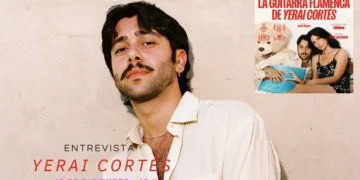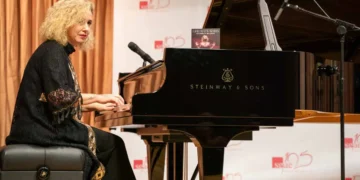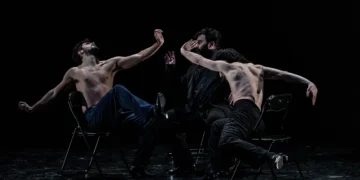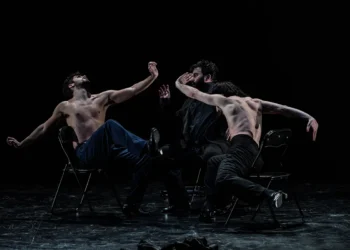|
|
Milagros Mengíbar
HOMENAJE A Thursday, December 18th, 2003, |
Dance: Milagros Mengíbar, Eli Parrilla,
Luisa Palacio
Cante: Manolo Sevilla, Juan Reina
Guitars: Rafael Rodríguez, Niño Elías
The Seville school of flamenco
dance is alive and well
The Seville school of flamenco dance is alive and
well and it is honored by the presence of dancers like Milagros
Mengíbar who paid tribute to the ‘bata de cola’
in a show that rejoiced in a tradition whose richness was made apparent
on the stage of the Joaquín Turina theater of the Centro
Cultural El Monte de Sevilla last Thursday.
The show opened with petenera. Luisa Palacio, a small-framed young
girl, ably worked gestures and arm movements. She lacked some confidence
in the control of her bata, but certainly knew how to grow with the
cante that seemed to enter her being little by little. The fringe
of her shawl trembled nervously and the audience got into the mood
for a promising evening. The dancer rose to the occasion and was rewarded
with warm applause.
An impertinent challenging
glance, as if holding back her art so as not to squander it.

Parrilla followed with alegrías. Her blue bata with white polkadots
moved perkily without relinquishing elegance. Her hands caressed the
void, her bata floated through the air or crawled along the stage
at her whim. She dominated every movement of the shawl and managed
the self-confidence to flirt, smile, swivel her hips and pull off
brave ‘desplantes’ with a flamenco twinkle in her eye
and postures.The audience welcomed Milagros to the stage enthusiastically
. She stood center-stage with an impertinent challenging glance, as
if holding back her art so as not to squander it. The bata stretched
out before her on the floor. A caña was to blame for filling
every corner of the theater with shouts of ‘ole’. Milagros
made contact with the muses. With her arms outstretched, her form
arched back, eyes front, she received the cante of Manolo Sevilla
and Juan Reina with whom a bonding took place when they approached
her to sing one on one. The dancer graciously showed her thanks responding
to each lament with her movements. Fandangos and soleá de Triana
delivered their flamenco message to much of the audience.
Rafael Rodríguez’ guitar did not escape Milagros’
notice as she danced alongside him in perfect emotional synchronicity
bringing some very fine moments throughout the show. His rhythmic
style, clipped and clean brought cheers and applause. Niño
Elías provided the discreet accompaniment for Eli and Luisa.
Luisa and Eli had the slight mark of lipstick on their cheeks upon
returning to the stage to dance caracoles, bambera and guajira.
Their teacher’s friendly, loving gesture surely served as
a stimulus to get their white fans twirling in sync to the gentle
movement of the shawls. Like white doves in flight, they seduced
the audience which was taken aback by the beautiful effect of these
accessories.
The gentle swiveling of
hips and the extremely complex control of the bata de cola

closed with cantiñas. With her elegant postures, unlimited
gesturing, proud countenance, elegance, personality she is currently
the number interpreter of the Seville school of flamenco dance. She
carries to an extreme her expressive arms and face, the art of dancing
in place, the controlled exaggeration expressed in the gentle swiveling
of hips and the extremely complex control of the bata de cola which
other artists find daunting lest their ineptitude be known; all this
in contrast to a style of dance full of acrobatics and pyrotechnics,
although that can also enthrall. Different approaches, different ways
of understanding the art, both of which should be equally represented
for the good of flamenco dance, despite the fact that one form might
become cloying and the other lead to a certain boredom. For that we
have experienced artists who lead the way for both approaches, independently
of public taste and of what audiences choose to spend their good money
out to see.
Text: Kiko
Valle
Photos: Estela Zatania






















